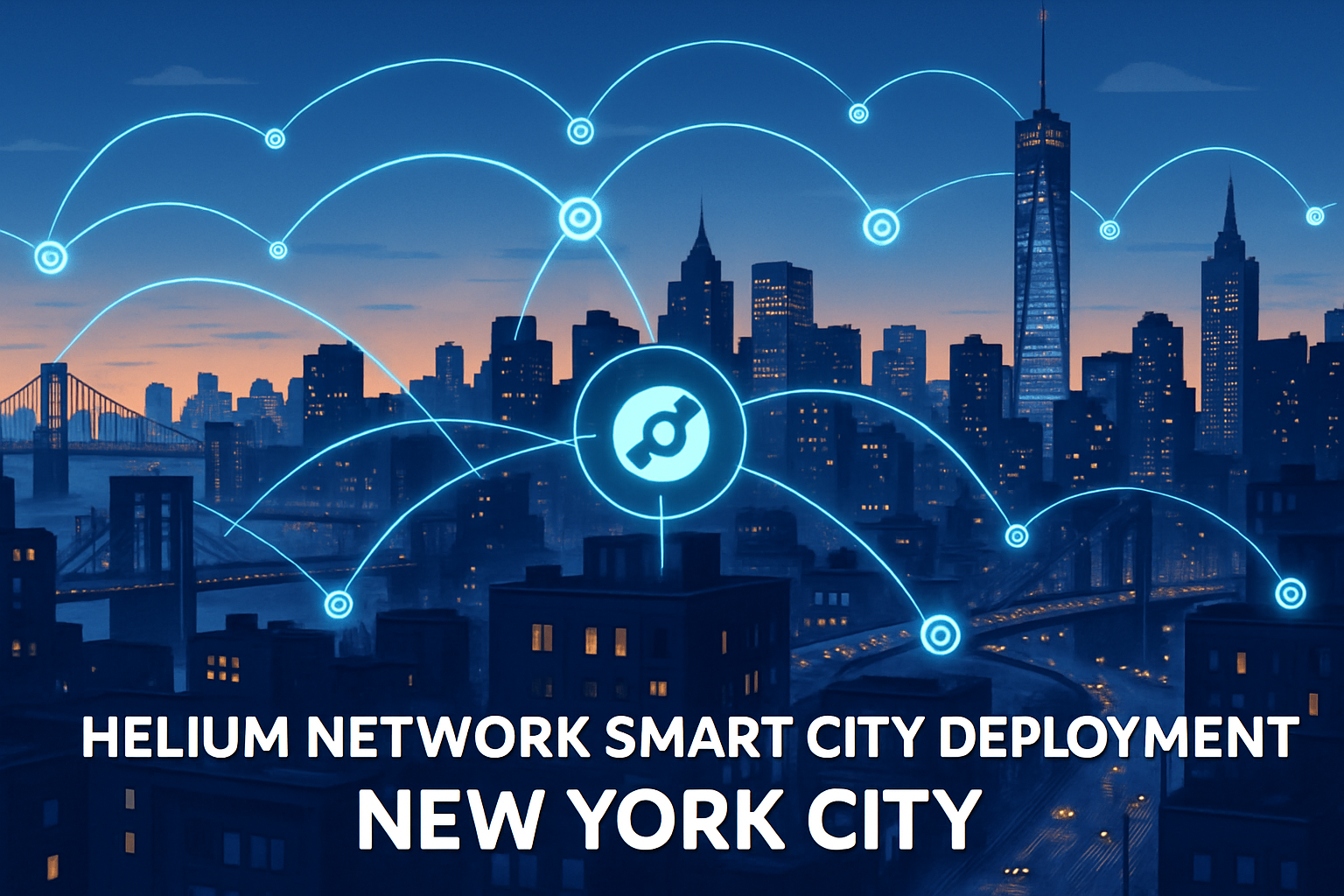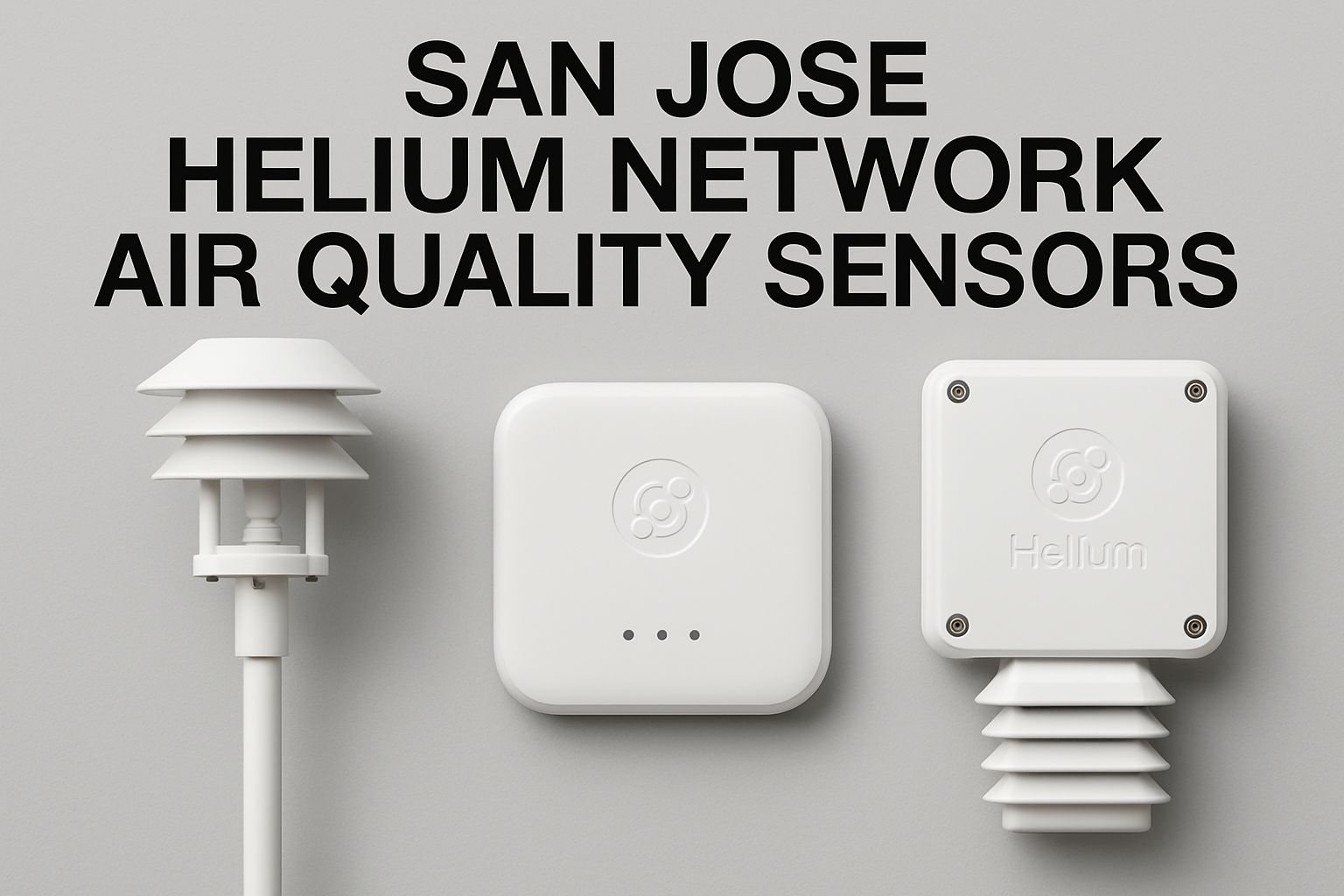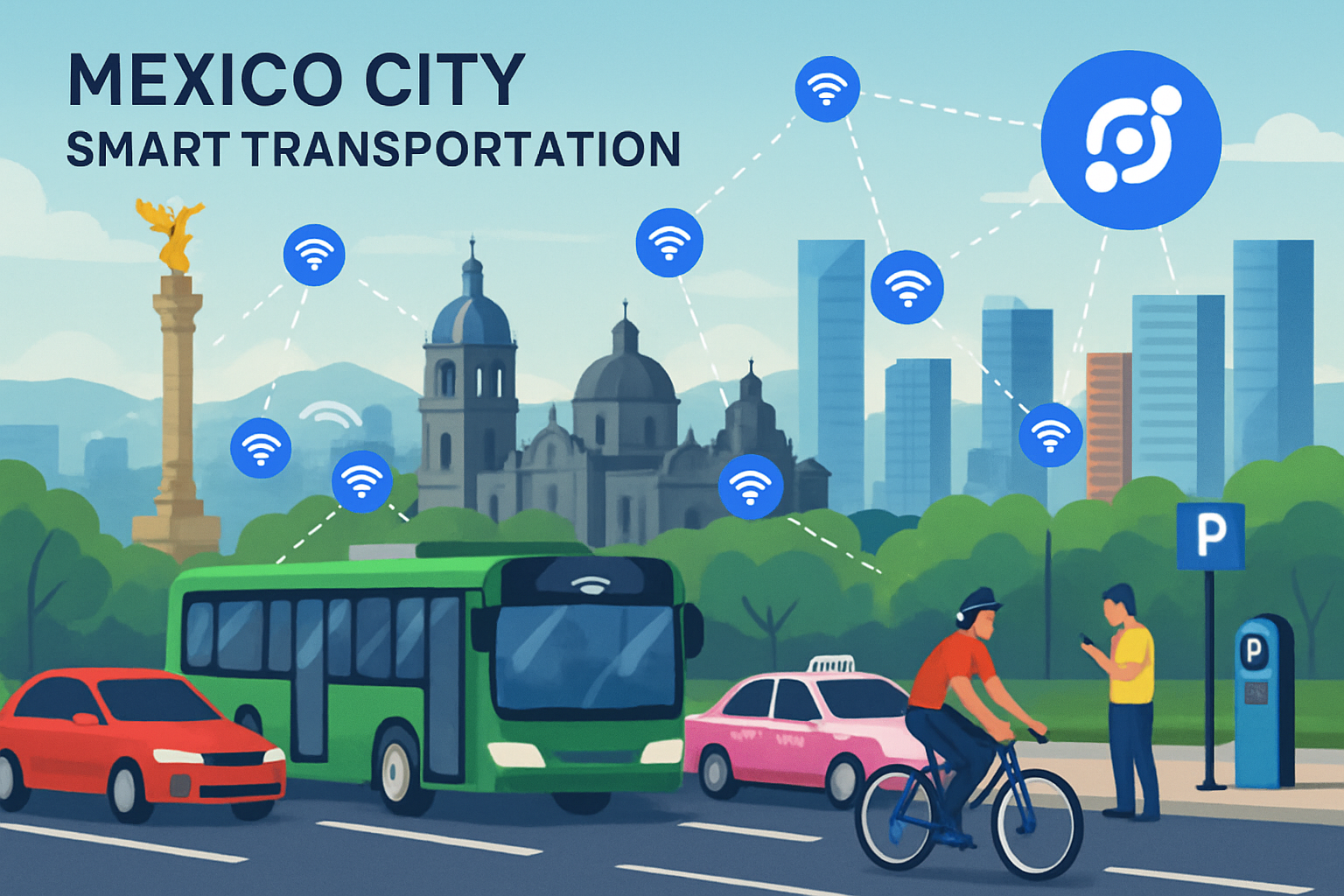
Helium’s DePIN network is rapidly redefining what’s possible for decentralized IoT connectivity in smart cities. With traditional wireless infrastructure often plagued by high costs, patchy coverage, and slow innovation, Helium has emerged as a disruptive force, empowering individuals and organizations to collaboratively build the backbone of tomorrow’s urban environments. The result? A living, breathing network that grows stronger and more valuable with every new Hotspot deployed.

How Helium’s DePIN Network Works in the Urban Jungle
At its core, the Helium DePIN network leverages blockchain technology to create a decentralized wireless infrastructure. Instead of relying on a handful of telecom giants, Helium incentivizes everyday users to deploy Hotspots, small wireless devices that provide coverage for Internet of Things (IoT) devices across cities. These Hotspot owners are rewarded with Helium Network Tokens (HNT), which currently trade at $2.48 (as of Q4 2025). This model not only democratizes access to connectivity but also ensures that coverage expands organically where it’s needed most.
The magic lies in Helium’s unique Proof-of-Coverage (PoC) consensus algorithm. By validating that Hotspots are providing reliable service in physical locations, PoC makes it possible to crowdsource trustworthy wireless networks at scale, a game-changer for urban IoT deployments.
Pushing Smart City Boundaries: Real-World Impact
The growth numbers speak for themselves. In Q2 2025 alone, the Helium Network offloaded 2,721 TB of data from major U. S. mobile carriers, a staggering 138.5% increase quarter-over-quarter. Meanwhile, registered accounts with Helium Mobile soared by 94.1%, surpassing 311,200 users. This isn’t just theoretical innovation; it’s measurable progress on the ground.
Smart city planners are taking note. From traffic management and waste collection to flood detection and environmental monitoring, municipalities are leveraging Helium’s decentralized IoT connectivity to build more efficient, adaptive urban systems. The network’s open architecture means developers can easily integrate new applications, fueling a virtuous cycle of innovation and adoption.
A Closer Look: Tokenomics Powering Sustainable Growth
No discussion about the Helium ecosystem is complete without exploring its robust tokenomic model. HNT supply is carefully managed via a halving schedule (approved under HIP-20), aiming for sustainability as adoption grows. The initial target was 5 million HNT per month, but emissions halve every two years until reaching a maximum cap of 223 million HNT, a mechanism designed to balance availability with long-term value.
An innovative twist is the Burn and Mint Equilibrium: Data Credits (DCs), used to pay network fees and denominated in USD, are created by burning HNT tokens. As demand for DCs rises alongside network usage (average daily DC burns jumped from $6,170 to $10,423 this year), so does upward pressure on HNT value, directly linking token economics with real-world activity.
- Learn more about how Helium leverages Solana for scalability and security
- Explore recent growth milestones on depinscan. io
- Dive deeper into Helium’s tokenomics and Proof-of-Coverage model
Helium’s decentralized approach is more than a technical innovation, it’s a social and economic shift. By rewarding individuals for providing wireless coverage, the network aligns incentives across communities, businesses, and developers. This dynamic fosters a grassroots movement where smart city wireless infrastructure isn’t just owned by distant corporations but by the very people who use it daily.
Smart City Case Studies: Helium in Action
Across North America and beyond, Helium-powered solutions are quietly transforming urban life. For example, in New York City, a city-wide pilot leverages Helium Hotspots for real-time air quality monitoring and predictive flood alerts. Logistics companies use the network to track assets across sprawling metro areas without relying on expensive cellular contracts. In Mexico City, smart waste bins equipped with Helium-enabled sensors optimize collection routes, cutting costs and reducing emissions.
3 Smart Cities Leading with Helium DePIN Deployments
-

New York City: Pioneering Urban IoT CoverageNew York City stands at the forefront of Helium’s DePIN adoption, with a $50 million Helium Foundation grant program launched in 2025 to expand decentralized wireless coverage. The city’s deployment supports environmental monitoring, smart waste management, and real-time asset tracking across boroughs, leveraging thousands of Helium hotspots to power citywide IoT solutions.
-

San Jose, California: Smart Environmental MonitoringSan Jose has integrated the Helium Network to enable citywide air quality and environmental sensors. By utilizing Helium’s decentralized LoRaWAN infrastructure, the city has improved data collection for pollution tracking and public health initiatives, making urban management more responsive and data-driven.
-

Mexico City: Expanding Decentralized ConnectivityMexico City is a key beneficiary of Helium’s North American expansion, with hotspot deployments supporting smart transportation and logistics. The city leverages Helium’s IoT network for real-time fleet tracking and smart traffic management, enhancing efficiency and transparency in urban mobility systems.
These projects highlight how blockchain IoT solutions can address real-world challenges at scale. The open-source ethos encourages experimentation: startups are building everything from connected bike-sharing platforms to decentralized energy grids atop the same infrastructure.
Challenges and the Road Ahead
No revolution is without its growing pains. As adoption accelerates, questions around network reliability, regulatory compliance, and spectrum management have come to the fore. Helium’s migration to Solana has answered many scalability concerns, but ongoing community governance remains crucial as new use cases emerge.
The recent launch of a $50 million grant program by the Helium Foundation signals strong institutional support for expanding coverage in underserved markets, starting with New York City and rolling out across the U. S. and Mexico over the next year (details here). This initiative aims to accelerate both technical upgrades and real-world adoption, ensuring that decentralized IoT connectivity becomes an urban standard rather than an exception.
Why Helium’s Model Matters Now
With HNT trading at $2.48, investors are watching closely as Data Credit burns surge alongside user growth. The Burn and Mint Equilibrium ensures that every uptick in smart city data usage translates into tangible value for token holders, a rare alignment of utility and incentive in crypto ecosystems.
For tech enthusiasts, developers, or urban planners seeking resilient connectivity infrastructure, Helium offers a blueprint for democratized innovation. Its success proves that when communities own their networks, and share in their rewards, cities become smarter not just by design but by participation.
“Adaptation is at the heart of every thriving city, and every thriving network. ”



